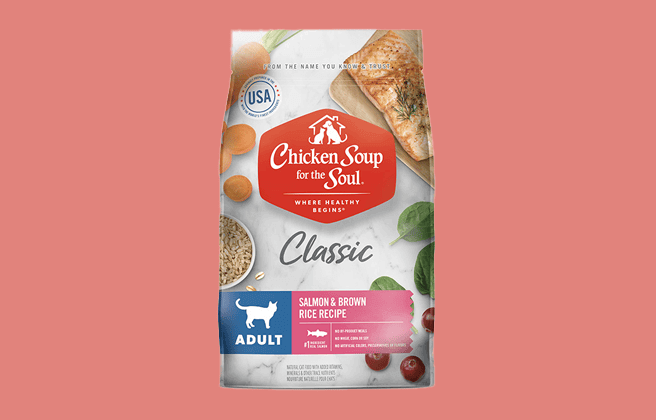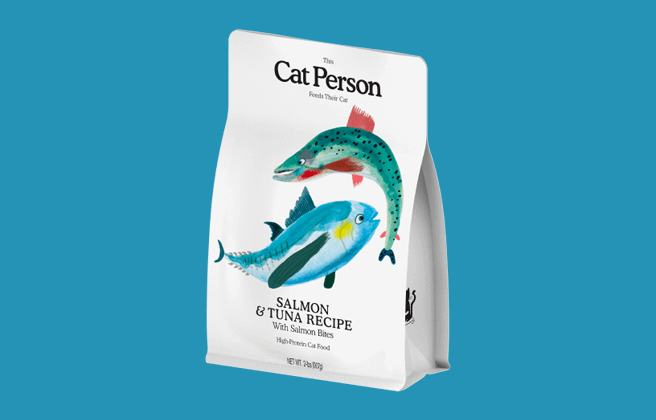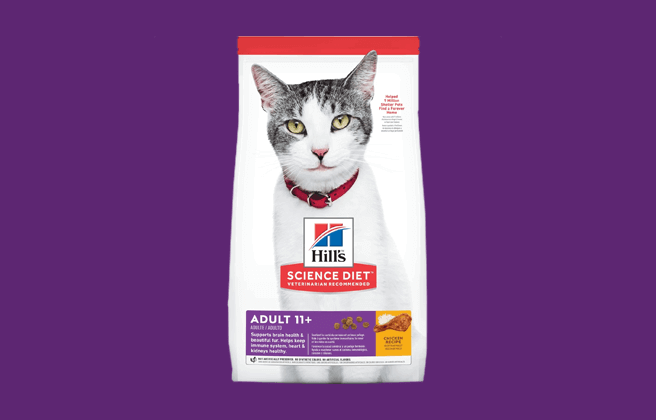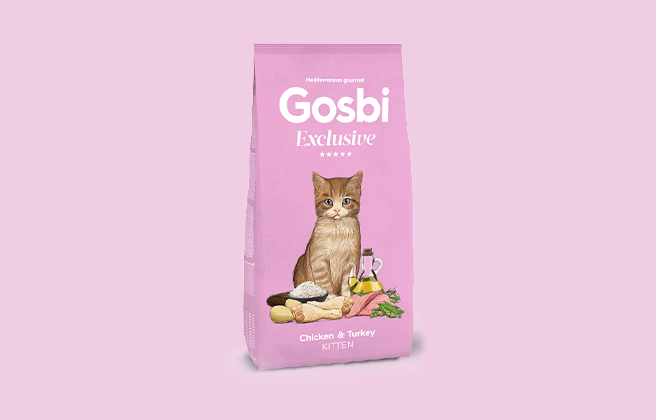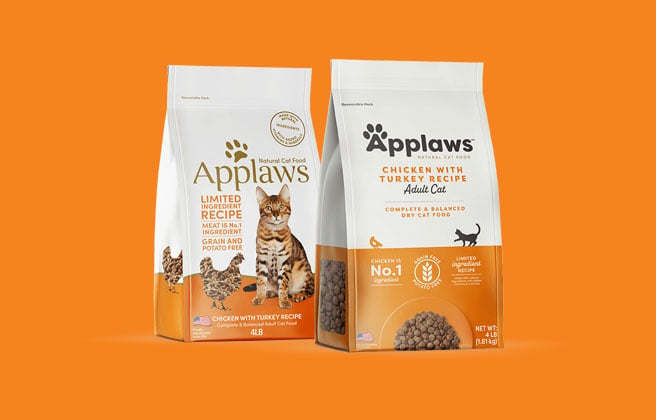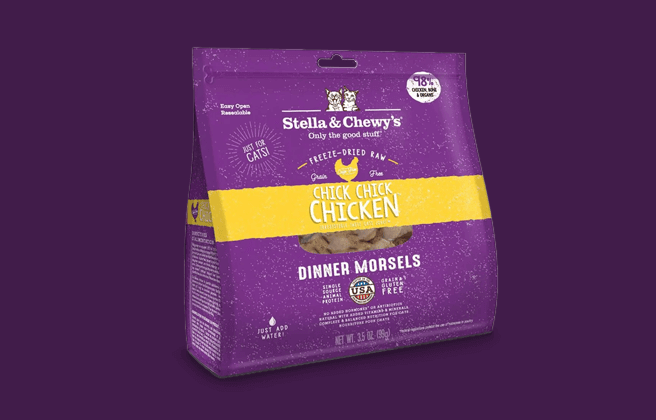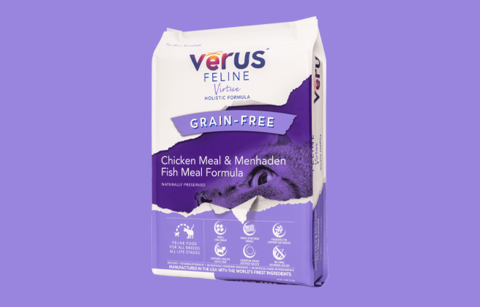
Our Verdict
Verus dry product range is made of three recipes which all receive the Cat Food Advisor rating, 3 stars
This range of food offers near-average protein levels and contains plant based protein and higher than average fat content.
Pros
- Does not contain artificial colors, or preservatives
- No fillers, wheat, or soy
- Contains chelated minerals
Cons
- Contains plant based protein
- Natural flavors are not defined
- Contains more than one controversial ingredient
The table below shows each recipe in the range including our rating and the AAFCO nutrient profile: Growth (kitten), Maintenance (adult), All Life Stages, Supplemental or Unspecified.
| Product line | Rating | AAFCO |
|---|---|---|
| VēRUS Feline Life Advantage Formula | 3 | A |
| VēRUS Feline Virtue Formula | 3 | A |
| VēRUS Feline Distinct Formula | 3 | A |
Recipe and Label Analysis
The VēRUS Feline Virtue Formula recipe was selected to represent the other products in the line for a detailed recipe and nutrient analysis.
Label and nutrient data below are calculated using dry matter basis.
VēRUS Feline Virtue Formula
Estimated Dry Matter Nutrient Content
Protein
Fat
CarbsCarbohydrates
Chicken meal, chickpeas, dried potato, chicken fat (preserved with mixed tocopherols), egg product, lentils, menhaden fish meal, brewers dried yeast, calcium carbonate, dried beet pulp, natural flavor, dicalcium phosphate, flaxseed, dried tomato pomace, choline chloride, potassium chloride, salmon oil (preserved with mixed tocopherols), dried cranberry, dried blueberry, salt, dried kelp, dl-methionine, taurine, coconut oil (preserved with mixed tocopherols), fructooligiosaccharide, mixed tocopherols (a preservative), turmeric, dried pediococcus acidilactici fermentation product, yucca schidigera extract, vitamin E supplement, niacin supplement, thiamine mononitrate, biotin, vitamin A supplement, pyridoxine hydrochloride, riboflavin supplement, D-calcium pantothenate, vitamin B12 supplement, folic acid, vitamin D3 supplement, magnesium sulfate, zinc proteinate, iron proteinate, manganese proteinate, copper proteinate, sodium selenite, calcium iodate.
Fiber (estimated dry matter content) = 4%
Red denotes any controversial items
Ingredients Analysis
The first ingredient is chicken meal. Chicken meal is considered a meat concentrate and contains nearly 300% more protein than fresh chicken.
The second ingredient is chickpeas. Also known as garbanzo beans. Like peas, beans and lentils, chickpeas are a nutritious member of the fiber-rich legume (or pulse) family of vegetables.
However, chickpeas contain about 22% protein, a factor that must be considered when judging the actual meat content of this cat food.
The third ingredient is dried potato, a dehydrated item usually made from the by-products of potato processing. In most cases, dried potato can contain about 10% dry matter protein which can have a slight effect on our estimate of the total meat content of this recipe.
The fourth ingredient is chicken fat. Chicken fat is obtained from rendering chicken, a process similar to making soup in which the fat itself is skimmed from the surface of the liquid.
Chicken fat is high in linoleic acid, an omega-6 fatty acid essential for life. Although it doesn’t sound very appetizing, chicken fat is actually a quality ingredient.
The fifth ingredient is egg product, an unspecified (wet or dry?) form of shell-free eggs. Quality can vary significantly. Lower grade egg products can even come from commercial hatcheries – from eggs that have failed to hatch.
The sixth ingredient is lentils which are a quality source of carbohydrates. Plus (like all legumes) they’re rich in natural fiber.
However, lentils contain about 25% protein, a factor that must be considered when judging the actual meat content of this cat food.
The seventh ingredient is menhaden fish meal. Because it is considered a meat concentrate, fish meal contains almost 300% more protein than fresh fish itself.
Menhaden are small ocean fish related to herring. They’re rich in protein and omega-3 fatty acids. What’s more, in their mid-depth habitat, menhaden are not exposed to mercury contamination as can be typical with deep water species.
This item is typically obtained from the “clean, dried, ground tissue of undecomposed whole fish and fish cuttings” of commercial fish operations. 1
The eighth ingredient is brewers dried yeast, which can be a controversial item. Dried yeast contains about 45% protein and is rich in other healthy nutrients. Fans believe yeast repels fleas and supports the immune system. Critics argue yeast ingredients can be linked to allergies.
This may be true, but (like all allergies) only if your particular cat is allergic to the yeast itself. In any case, unless your cat is specifically allergic to it, we feel yeast should be considered a positive addition.
From here the list goes on to include a number of other items. But to be realistic, ingredients located this far down the list (other than nutritional supplements) are not likely to affect the overall rating of the product.
However, there are one notable exception.
We note that this food also contains chelated minerals that have been chemically attached to protein. This makes them easier to absorb. Chelated minerals are usually found in better cat foods.
Nutrient Analysis
Based on its ingredients alone, VēRUS Feline Virtue Formula recipe looks like an average wet product.
The dashboard displays a dry matter protein reading of 36.7%, a fat level of 22.2% and an estimated carbohydrate level of 33.1%.
As a group, the brand features a near-average protein content of 36.7% and an above-average fat level of 22.2%. Together these figures suggest a carbohydrate content of 33.1% for the overall product line, alongside a fat to protein ratio of 61%.
This means this Verus dry range contains near-average protein, near- average carbohydrate and higher than average fat, when compared to typical dry cat food.
Final Word
This range of food is average when compared to other dry cat foods. These recipes are formulated to meet the nutritional levels established by the AAFCO Cat Food Nutrient Profiles for All Life Stages.
Has Verus cat food been recalled in the past?
No. Verus cat food has no history of product recalls.
You can view a complete list of all cat food recalls since 2021 here.
To stay on top of any cat food product recalls, sign up for our free email alerts, here.
About
VēRUS Pet Foods was founded in 1993 by Russell Armstrong. Its ingredients are sourced from Europe and all suppliers are (EU)-certified.
The company’s pet foods are manufactured in EU-certified facilities in the United States and New Zealand. Its dry food is manufactured in upstate New York, while the canned formulas are made in South Dakota (blue labels) and New Zealand (green and cat-faced labels).
Best cat foods
We uphold the highest editorial standards when creating the authoritative content pet parents rely on and trust.
Every piece of clinical content on the Cat Food Advisor is reviewed by our certified Veterinary Advisory Board, which consists of licensed veterinarians and medically certified specialists.
Our reviews are completely independent; we are not paid by any pet food company to promote their products favorably. We do not accept money, gifts, samples or other incentives in exchange for special consideration. For more information see our Disclaimer & Disclosure page.






